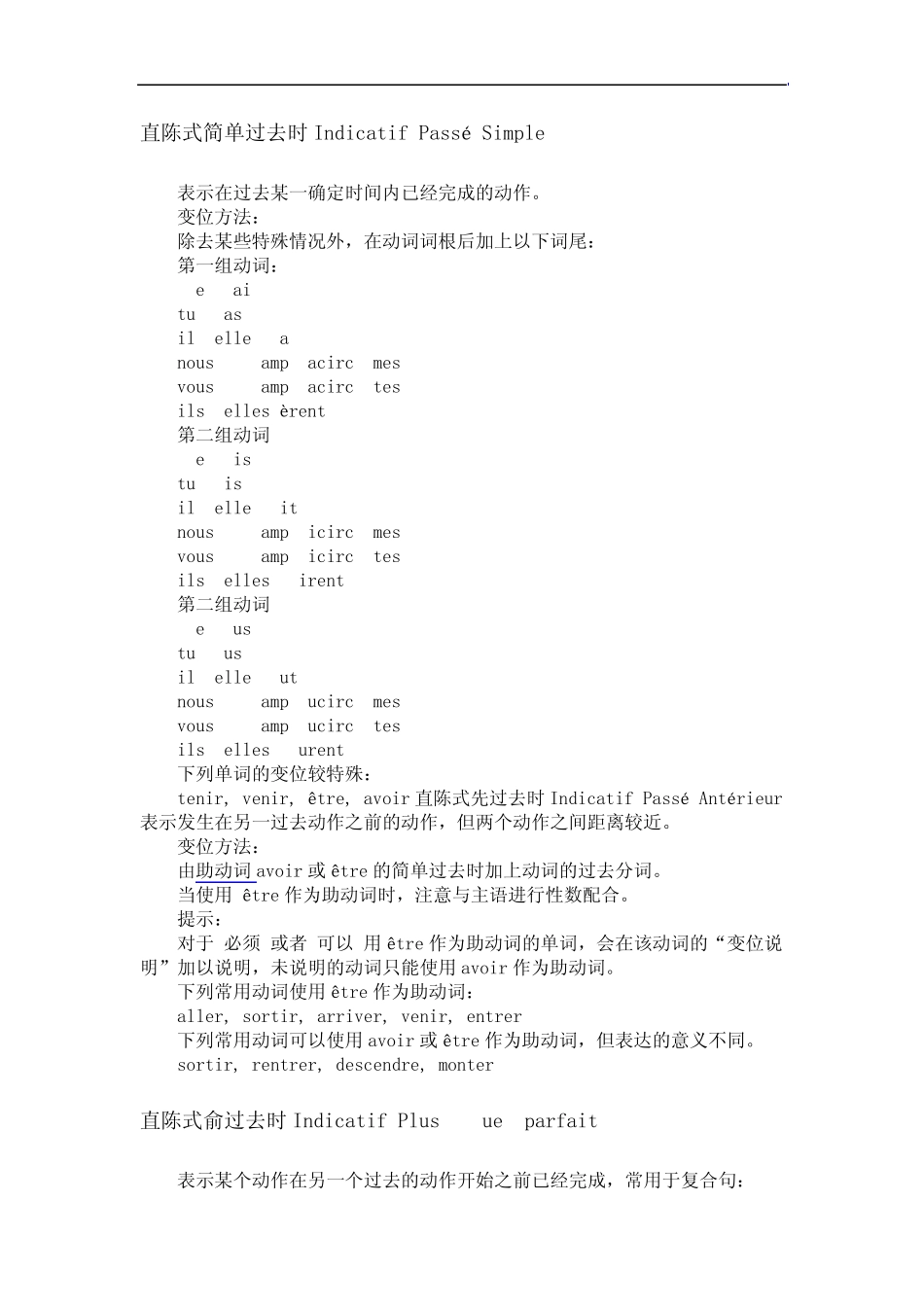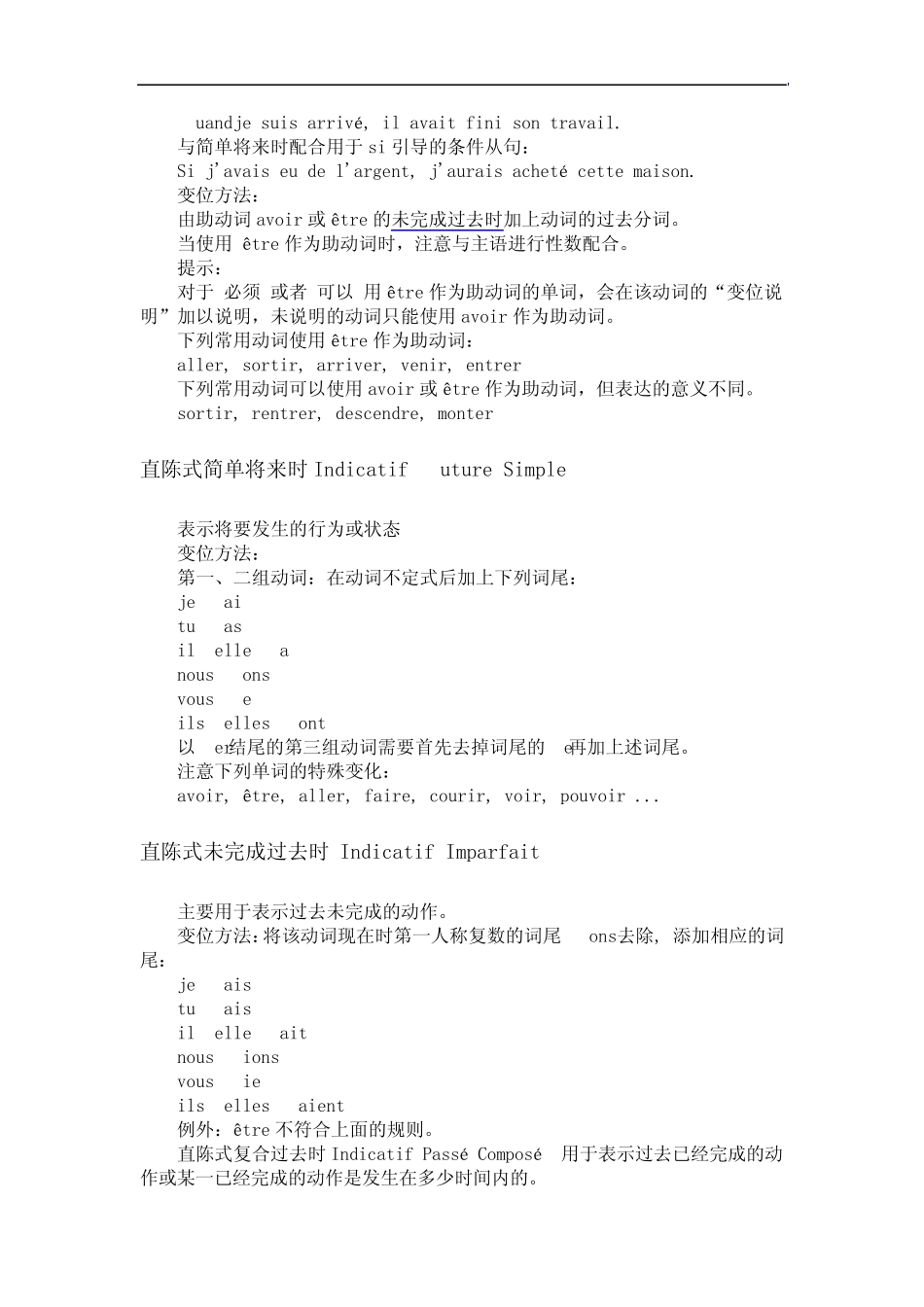^ | You have to believe, there is a way. The ancients said:" the kingdom of heaven is trying to enter". Only when the reluctant step by step to go to it 's time, must be managed to get one step down, only have struggled to achieve it. -- Guo Ge Tech 动词变位 动词变位是动词词尾的屈折变化,用以表达不同的时态,语态。法语、西班牙语、葡萄牙语以及俄语、德语里都有一套复杂严谨的动词变位。 目录 法语动词变位 西班牙语动词变位 法语动词变位 西班牙语动词变位 法语动词变位 法语的动词变位十分繁多,根据时态和语态以及人称的不同,可以有二十个以上的变化。 法语动词变位方法 直陈式现在时 Indicatif Présent 变位方法: 第 一组 动词(通 常 为 -er): 参 见 aimer 注 意 一些 第 一组 动词由 于 发 音 需 要 ,在变位时会 有所 变化: 以-eler, -eter结 尾的第 一组 动词,如 appeler, jeter ,在单 数 所 有人称,以及复数 第 三 人称的变位中 ,词尾字 母 变为 "ll","tt"。 以-cer, -ger结 尾的第 一组 动词,如 commencer, manger, 在复数 第 一人称时词尾应 改 为 -çons, -geons 。 以-ayer,-oyer,-uyer结 尾的第 一组 动词,如 essayer, envoyer, ennuyer, 在单 数 所 有人称,以及复数 第 三 人称的变位中 ,词尾字 母 由 y变为 i。 第 二组 动词 (通 常 为 -ir): 参 见 finir 例 外 : sortir, courir, ouvrir, servir, partir, dormir 等 第 三 组 动词: 不规 则 变化。 直陈式简单过去时Indicatif Passé Simple 表示在过去某一确定时间内已经完成的动作。 变位方法: 除去某些特殊情况外,在动词词根后加上以下词尾: 第一组动词: je -ai tu -as il/elle -a nous -âmes vous -âtes ils/elles -èrent 第二组动词: je -is tu -is il/elle -it nous -îmes vous -îtes ils/elles -irent 第二组动词: je -us tu -us il/elle -ut nous -ûmes vous -ûtes ils/elles -urent 下列单词的变位较特殊: tenir, venir, être, avoir 直陈式先过去时Indicatif Passé Antérieur 表示发生在另一过去动作之前的动作,但两个动作之间距离较近...


